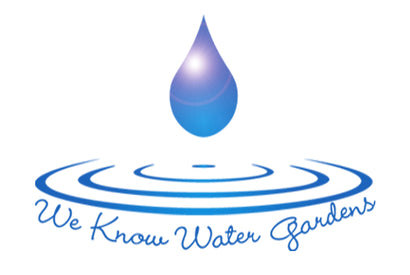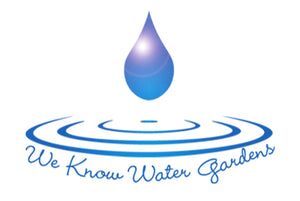Essential Autumn Maintenance Tips for a Beautiful and Healthy Pond

As autumn leaves begin to fall and the air turns cooler, it's time to give some extra attention to your pond. Proper maintenance during this season is crucial to ensure your pond remains beautiful and healthy throughout the colder months. In this article, we will provide you with the essential autumn maintenance tips relevant to Australian ponds to help you achieve just that.
From cleaning out debris to preparing your fish for winter, these tips will equip you with the knowledge and guidance you need to maintain a thriving pond. We will cover everything from controlling algae growth to protecting your pond equipment from the harsh weather conditions.
Clearing fallen leaves and debris
 One of the most important tasks during autumn is clearing fallen leaves and debris from your pond. Leaves that accumulate in the water can decompose and release harmful substances, affecting the water quality and potentially harming the fish and plants in your pond.
One of the most important tasks during autumn is clearing fallen leaves and debris from your pond. Leaves that accumulate in the water can decompose and release harmful substances, affecting the water quality and potentially harming the fish and plants in your pond.
To clear the fallen leaves, you can use a pond net or a skimmer net. Gently skim the surface of the water, removing any leaves or debris that have settled. It's important to do this regularly, as leaves can quickly accumulate, especially during windy autumn days. Additionally, you should also remove any leaves or debris that have fallen into the pond bottom, as they can decompose and release harmful gases.
Another effective method to prevent leaves from falling into your pond is to install a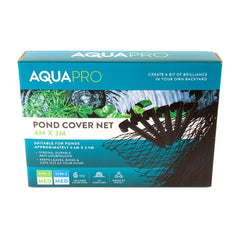 pond cover net. This net can be placed over the pond to catch falling leaves, preventing them from entering the water. It's a simple and efficient solution to keep your pond clean and clear during autumn.
pond cover net. This net can be placed over the pond to catch falling leaves, preventing them from entering the water. It's a simple and efficient solution to keep your pond clean and clear during autumn.
Checking and cleaning pond filters
 Autumn is a good time to check and clean your pond filters. Over time, debris and organic matter can clog the filters, reducing their efficiency and potentially harming the water quality. By cleaning the filters, you ensure that the water in your pond remains clear and healthy.
Autumn is a good time to check and clean your pond filters. Over time, debris and organic matter can clog the filters, reducing their efficiency and potentially harming the water quality. By cleaning the filters, you ensure that the water in your pond remains clear and healthy.
First, turn off the pump to stop the water flow. Then, carefully remove the filters from the pond and inspect them for any debris or blockages. If you find any, gently rinse the filters with clean water to remove the accumulated dirt. Avoid using tap water, as it may contain chlorine or other chemicals that can harm the beneficial bacteria in your filters.
After cleaning the filters, you can also consider adding some beneficial bacteria to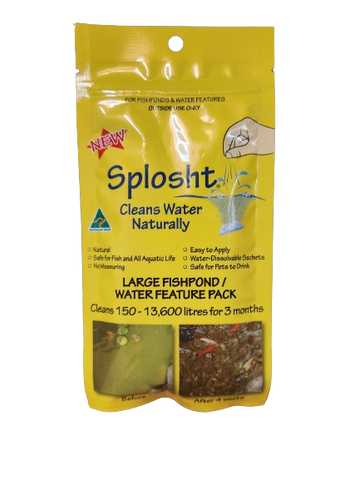 help break down organic matter and maintain a healthy balance in your pond. These bacteria help to reduce ammonia and nitrate levels, keeping the water clean and safe for your fish and plants.
help break down organic matter and maintain a healthy balance in your pond. These bacteria help to reduce ammonia and nitrate levels, keeping the water clean and safe for your fish and plants.
Remember to follow the manufacturer's instructions when cleaning and maintaining your specific type of pond filters. Regular maintenance will extend the lifespan of your filters and ensure optimal performance.
Adjusting fish feeding habits
As the temperature drops during autumn, it's important to adjust your fish feeding habits accordingly. Different regions of Australia experience varying climatic variations. Some northern parts of Australia will not experience true autumn or winter extremes when compared to more southern parts of Australia. It is important to adjust feeding habits as determined by your climatic zone.
Fish have a slower metabolism in colder water, and they require less food to sustain themselves. Overfeeding can lead to poor water quality and health problems for your fish.
Start by gradually reducing the amount of food you feed your fish. Observe their feeding behaviour and adjust accordingly. As a general guideline, you can feed them once a day, offering only what they can consume within a few minutes. If there are any uneaten pellets, remove them from the pond to prevent them from decomposing and polluting the water.
It's also worth considering switching to a lower-protein fish food during autumn. High-protein foods are designed for fish during their active growth period, typically during spring and summer. Lower-protein foods are more suitable for the colder months when fish require less energy.
Additionally, you should be mindful of the water temperature when feeding your fish. If the water temperature drops below 10°C, it's best to stop feeding them altogether. Fish become less active and their digestive system slows down in colder water, making it difficult for them to process food.
Inspecting and repairing pond equipment
Autumn is the perfect time to inspect and repair any pond equipment that may have been damaged or worn out during the summer months. Properly functioning equipment is essential for maintaining a healthy pond environment.
Start by checking your pond pump and ensure it is working efficiently. Clean any debris that may have accumulated around the pump, as this can affect its performance. Clean and or replace any pre-filter sponges or filter media. If you notice any unusual noises or decreased water flow, it may be a sign of a problem that needs attention.
Inspect your pond's water feature, such as fountains or waterfalls, and make sure they are functioning properly. Check for any leaks or clogs that may hinder the flow of water. Clean the nozzles or spouts and remove any debris that may have accumulated.
Don't forget to inspect and clean your pond's lighting system. Remove any debris or algae that may be covering the lights, as this can affect their brightness. Replace any damaged bulbs or fixtures to ensure a well-lit pond during the darker autumn evenings.
Lastly, check your pond's electrical connections and ensure they are safe and secure. Look for any signs of wear or damage, such as frayed wires or exposed connections. If you notice any issues, it's important to have them repaired or replaced by a qualified electrician.
Managing Water Quality and Algae Control
 One of the key aspects of autumn pond maintenance is managing water quality and controlling algae growth. As the temperature drops, the biological processes in your pond slow down, and improper water management can lead to imbalances that can harm your pond's ecosystem.
One of the key aspects of autumn pond maintenance is managing water quality and controlling algae growth. As the temperature drops, the biological processes in your pond slow down, and improper water management can lead to imbalances that can harm your pond's ecosystem.
To maintain water quality, start by removing any debris that has accumulated in your pond, such as fallen leaves and twigs. These organic materials release nutrients into the  water, which can fuel algae growth. Use a net or pond vacuum to efficiently remove the debris without disturbing the pond's inhabitants.
water, which can fuel algae growth. Use a net or pond vacuum to efficiently remove the debris without disturbing the pond's inhabitants.
Ensure that you continue to run your filter or pond pump during the cooler season. This will help prevent stagnant areas where algae can thrive. Additionally, installing a UV clarifier can be beneficial in controlling algae growth. UV clarifiers use ultraviolet light to kill algae cells, effectively reducing their numbers in the water. Keep these running all through autumn and winter.
water. Keep these running all through autumn and winter.
Remember to regularly test your water parameters, such as pH, ammonia, and nitrate levels. These tests will help you identify any imbalances and allow you to take corrective measures before they become a problem. Adding beneficial bacteria to your pond can also help maintain water quality by breaking down organic waste and reducing nutrient levels.
By managing water quality and controlling algae growth, you will ensure that your pond remains clear and healthy throughout the autumn season.
Protecting Pond Plants and Wildlife
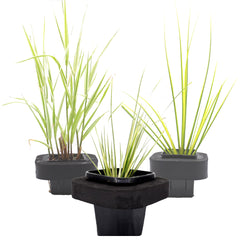 Autumn brings changes not only to the air temperature but also to the plants and wildlife in and around your pond. Taking steps to protect them during this season is essential for maintaining a thriving ecosystem.
Autumn brings changes not only to the air temperature but also to the plants and wildlife in and around your pond. Taking steps to protect them during this season is essential for maintaining a thriving ecosystem.
First and foremost, consider adding a pond netting system to prevent leaves from falling into the water. Leaves can decompose and release harmful substances that can disrupt the balance of your pond. The netting will act as a barrier, allowing you to easily remove fallen leaves without causing damage to your plants or disturbing the wildlife.
Another important aspect of protecting your pond plants is trimming and pruning. Before winter arrives, trim any dead or overgrown parts of your pond plants. This will not only improve their overall health but also prevent decaying plant matter from accumulating in your pond.
When it comes to our native wildlife, it's crucial to create shelter areas for your pond inhabitants- especially our frogs. Add pond plants such as reeds and rushes to provide protection to more sensitive pond plants. Rocks or logs to create hiding spots for fish and other aquatic creatures. These hiding spots will provide protection from predators and harsh weather conditions.
By protecting your pond plants and wildlife, you will maintain a balanced ecosystem and provide a safe haven for the creatures that rely on your pond for survival.
Preparing your pond for Winter
As the temperatures continue to drop, it's important to take proactive steps to prepare your pond for winter. Proper preparation will ensure the survival of your fish and prevent damage to your pond equipment.
Start by gradually reducing the amount of fish food you provide as the water temperature decreases. Fish become less active during the colder months and their metabolism slows down. Feeding them less will prevent the accumulation of undigested food, which can lead to water quality issues.
Before winter arrives, clean and inspect your pond equipment. Remove any debris and check for any signs of damage or wear. This includes your pond pump, filter, and any other equipment you may have installed. By addressing any issues before winter, you will prevent potential problems and ensure that your equipment remains in good working condition.
Lastly, consider covering your pond with a pond net or floating cover. This will help protect your pond from falling debris and reduce the amount of maintenance required during the winter months. It will also create an additional layer of insulation, helping to keep the water temperature more stable.
By properly preparing your pond for winter, you will ensure the survival of your fish and equipment, and make the transition into spring much smoother.
Autumn Pond Maintenance Checklist
To help you stay organized and ensure you don't overlook any important tasks, here's a handy autumn pond maintenance checklist:
- Clean out debris, such as fallen leaves and twigs, from your pond.
- Use a pond skimmer or surface aerator to improve water circulation.
- Consider installing a UV clarifier to control algae growth.
- Test your water parameters regularly and adjust as necessary.
- Add beneficial bacteria to maintain water quality.
- Install a pond netting system to prevent leaves from entering the water.
- Trim and prune your pond plants before winter.
- Create shelter areas for your fish and other pond inhabitants.
- Clean and inspect your pond equipment, addressing any issues before winter.
By following this checklist, you'll be well-prepared to tackle all the necessary maintenance tasks and ensure the health and beauty of your pond throughout the autumn season.
As autumn sets in, it's important to give your pond some extra attention to ensure it remains beautiful and healthy throughout the colder months. By following these essential autumn maintenance tips provided in this article, you'll be equipped with the knowledge and guidance needed to maintain a thriving pond.
From managing water quality and controlling algae growth to protecting your pond plants and wildlife, these tips cover all the necessary aspects of autumn pond maintenance. Additionally, preparing your pond for winter is crucial for the survival of your fish and the longevity of your equipment.
Remember, a well-maintained pond not only provides a picturesque setting for the autumn season but also creates a healthy environment for the wildlife that call it home. So, grab your gloves and get started on your autumn pond maintenance journey. By the time spring comes around, your pond will thank you!
© weknowwatergardens 2024
